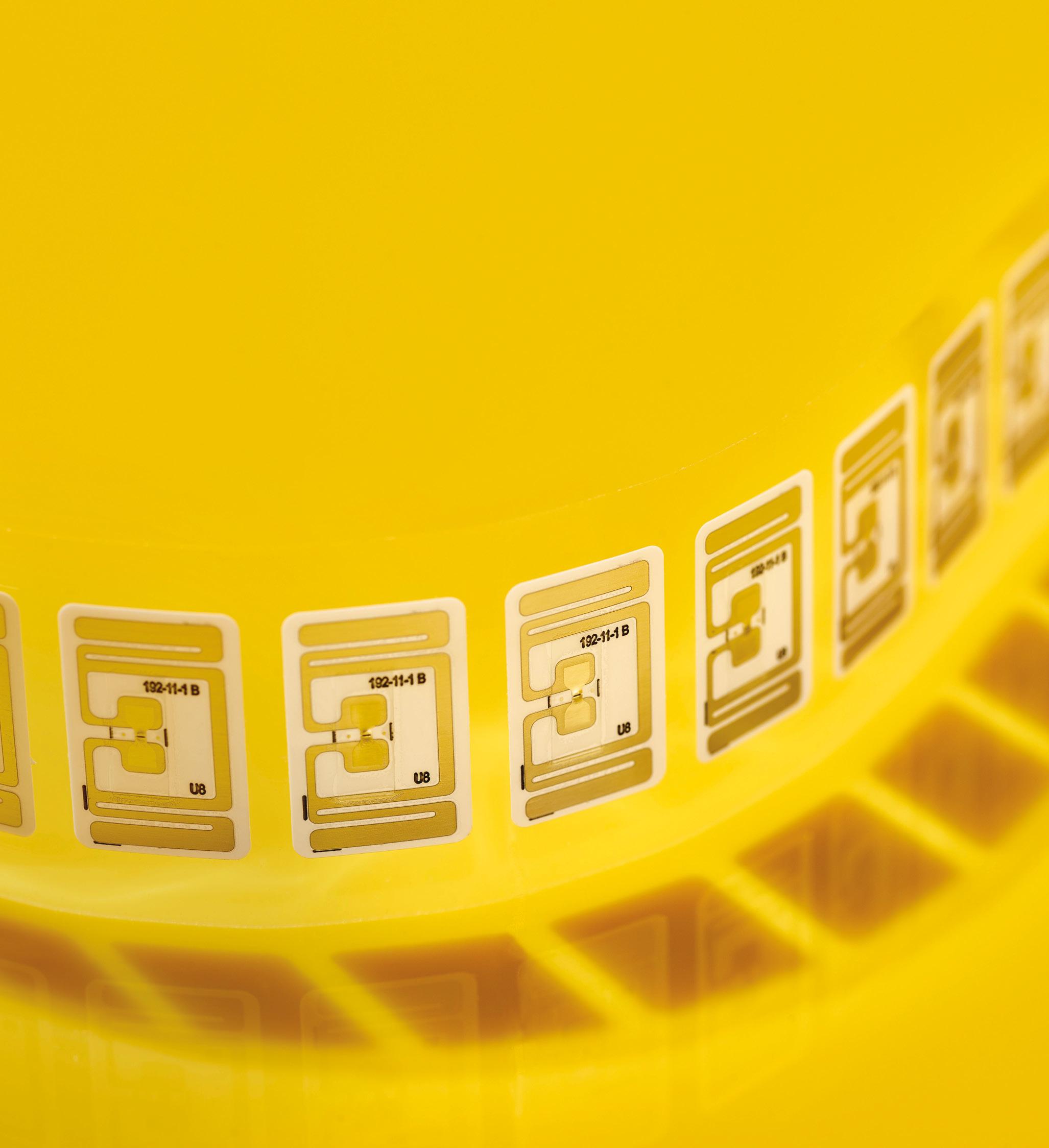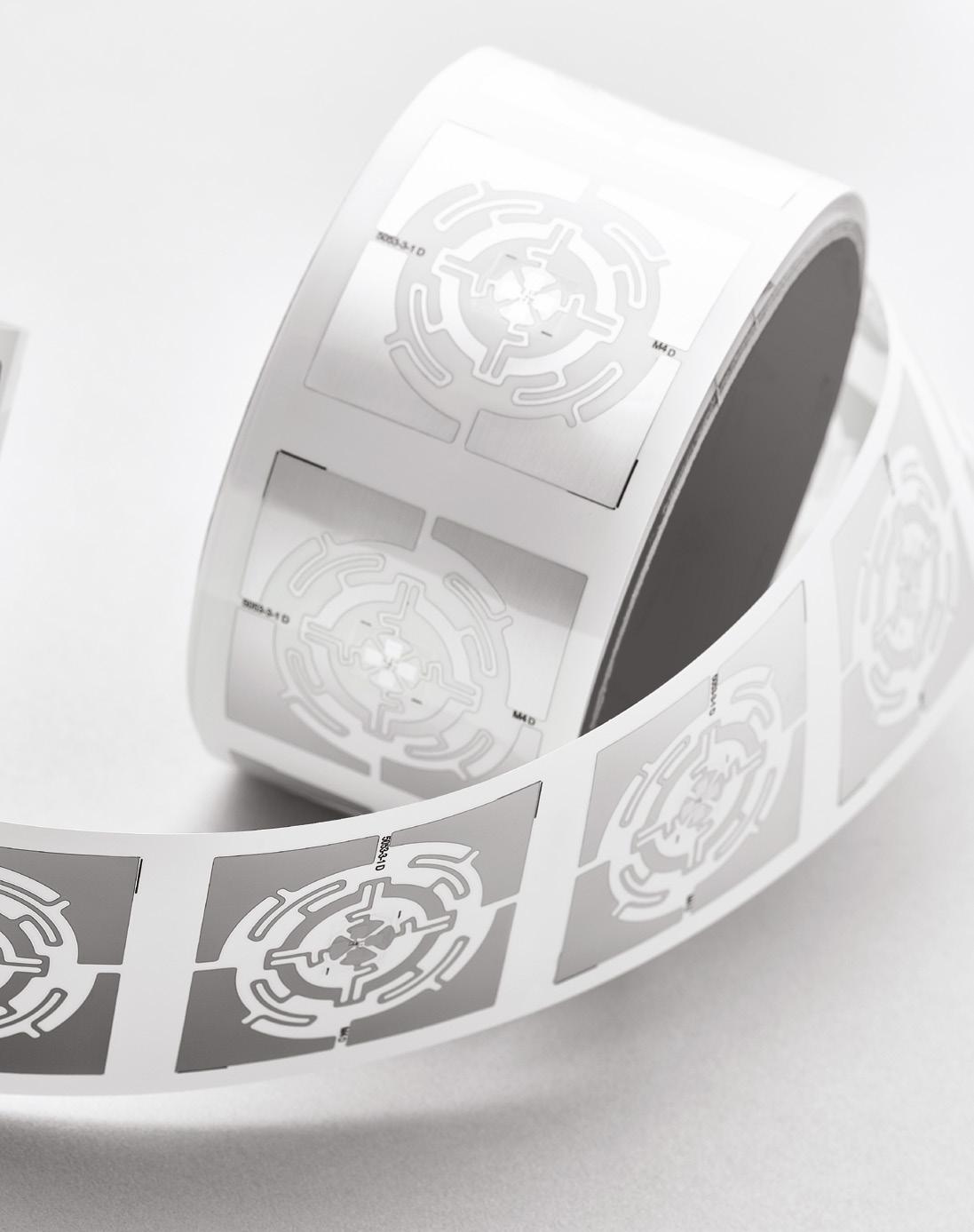Understanding RFID



After decades of real world application, radio frequency identification (RFID) technology is no longer seen as a mystery, but an opportunity. Increased efficiency and profitability across a wide range of industries is driving the global RFID market to reach $24 billion by 2033, according to IDTechEx Research.
As more converters integrate RFID into their label production processes, they are discovering two things:
` RFID capabilities enable deeper and more diverse customer relationships.
` Choosing an experienced supplier can expedite successful adoption.

There are three main hardware or physical components to any RFID system:
` The chip is the brain or memory that stores identifying data.
` The antenna is the transmitter that relays data from the chip to the reader.
` The reader is a programmable logic controller that activates whatever function is required — from recording inventory adjustments to issuing counterfeiting or theft alerts.
The inlay is the integrated unit made up of a chip and antenna. These two components are built onto a flexible carrier, which label converters can then insert into a finished product.
Every inlay has unique design characteristics dictated by the end user’s information tracking, monitoring and/or reporting requirements. How the customer uses RFID technology will determine which type of inlay a converter will need.

Customer requirements impacting inlay design include:
` Application — Passive RFID requires a signal to be read, or activated, whereas active RFID is battery-powered, enabling additional applications such as time and temperature tracking.
` Frequency — The operating range of an RFID application will dictate whether low frequency, high frequency or ultra high frequency radio waves are used.
` Attachment method — This is the method by which the chip is attached to the antenna. Direction-style attachment is suitable for many standard layouts, whereas strap attachment enables custom inlay designs that can improve converter throughput when more complex designs are required.
` Carrier material — Carrier materials vary greatly, from environmentally responsible substrates such as the paper label to more standard polyester films that can be layered into a finished label.
Where bar codes use an optical identification process, RFID uses radio waves and thin antennas to identify data and transmit it. This process eliminates concerns about label orientation or line-of-sight obstructions.
An RFID chip also offers comparatively vast data storage capabilities, giving end users a new way to track and store different types of data for diverse market applications. In the health care industry, end users have reported a return on investment up to $4 for every medication tracked with RFID tags. Even the grocery business, where razor-thin margins are the norm, is discovering food loss can be reduced by as much as 20 percent using RFID technology representing $22 billion in savings worldwide.
As more end users experience the ROI benefits of using RFID, demand for the technology is growing rapidly. Market-savvy converters adopting RFID capabilities for their customers are already gaining a competitive advantage and market share in industries ranging from retail to food and beverage to aviation.
Still, integrating RFID into the converting process involves an investment of time and resources in areas such as:
` Testing — An insertion and testing process must be incorporated into an existing conversion line. Testing is also required to ensure the electrical functions of the chips are operating properly.
` Equipment — New equipment may be required to integrate RFID capabilities. Requirements will depend on whether the inlay insertions are dry or wet.
` Packaging — Modifications in packaging may also be necessary to avoid chip damage during shipping.
So, how can you determine the right time to invest?
Prior to adoption, consider working with another converter on a toll-manufacturing basis as a stopgap measure. As customer demands become clear, you can then make incremental investments in equipment modifications and improvements.
Choosing an experienced partner for RFID implementation will also clarify any lingering concerns about the perceived complexity of the technology.
A knowledgeable inlay manufacturer will:
` Properly assess the scope of work required to fulfill an end user’s performance expectations.
` Design a chip/antenna configuration and carrier substrate appropriate to the scope of work.
` Identify conversion equipment and process modification requirements to ensure the proper installation and packaging of inlays.
` Recommend electronic testing points and other quality control procedures within the conversion production line to achieve desired performance outcomes.
` Identify continual improvements needed to meet each customer’s changing requirements.
RFID is transforming end users’ expectations of today’s label conversion processes, just as bar codes challenged the status quo more than 40 years ago. Avery Dennison is committed to supporting converters and their customers worldwide through the RFID adoption process.
AsapioneerinRFIDtechnologyandthelargestUHF RFIDinlaymanufactureranddistributorworldwide, AveryDennisoncanhelpyouachieveandprotecteach customer’sinformation gatheringobjectives,while openingnewwindowsofopportunityfordeeper,more profitablecustomerrelationships.

